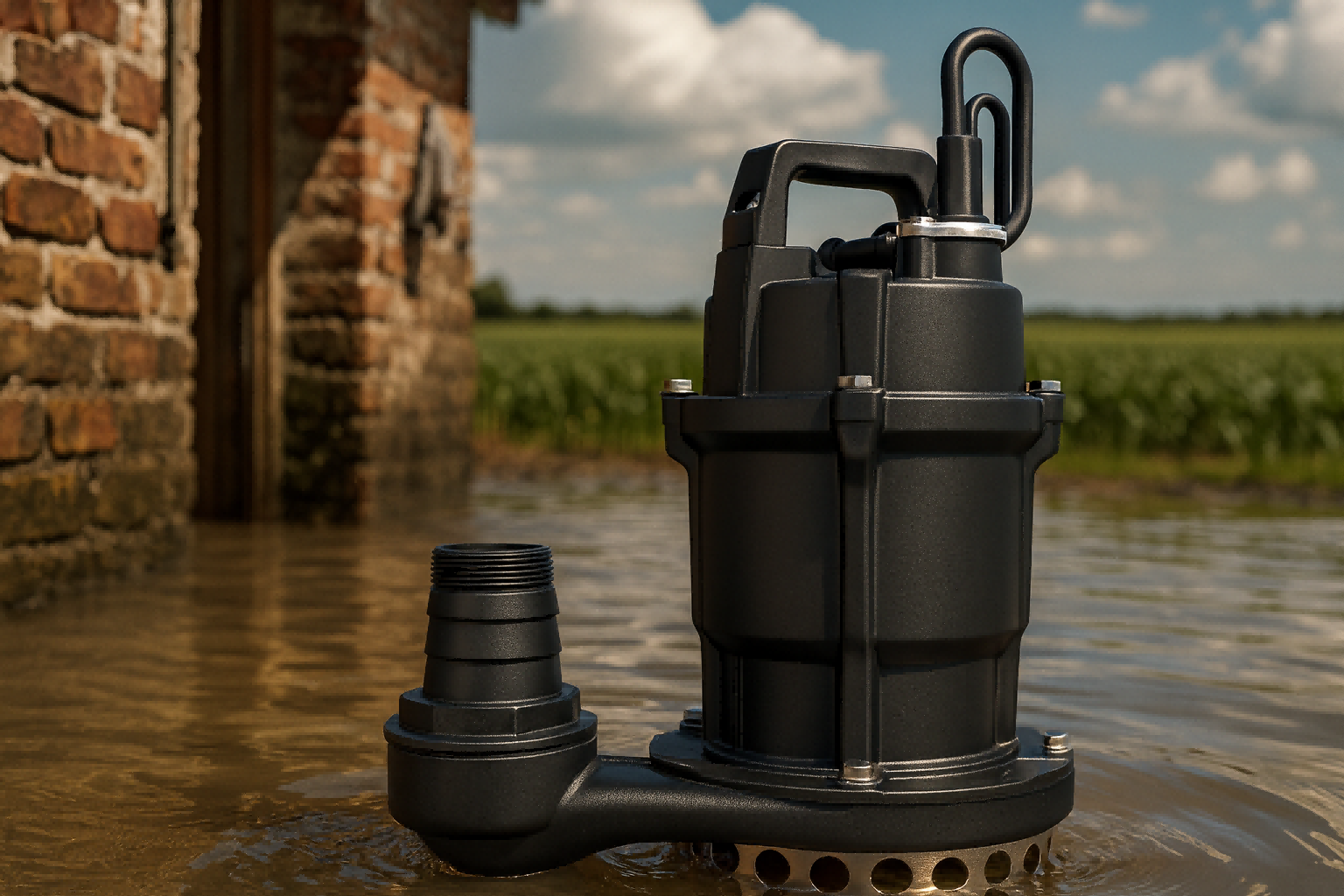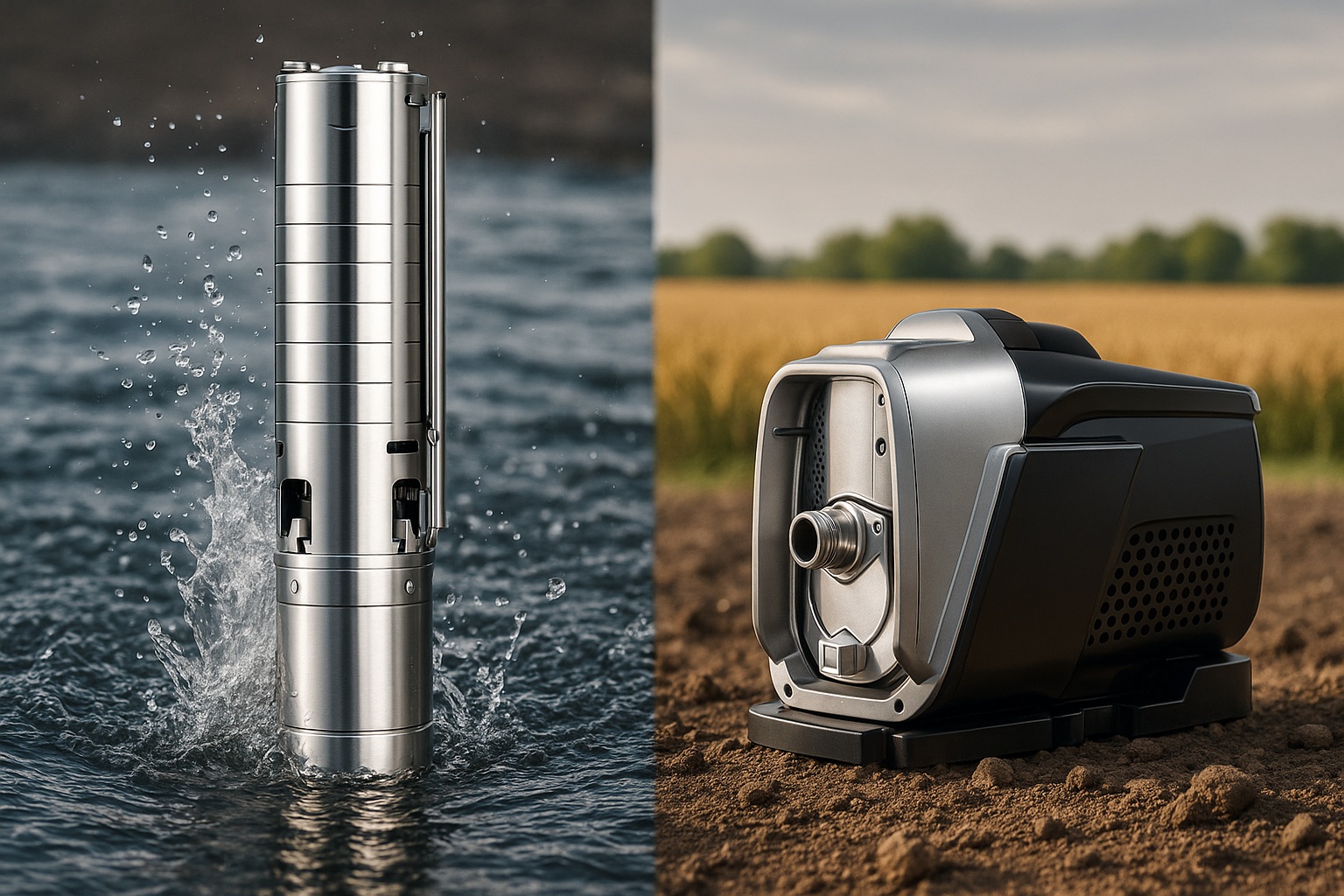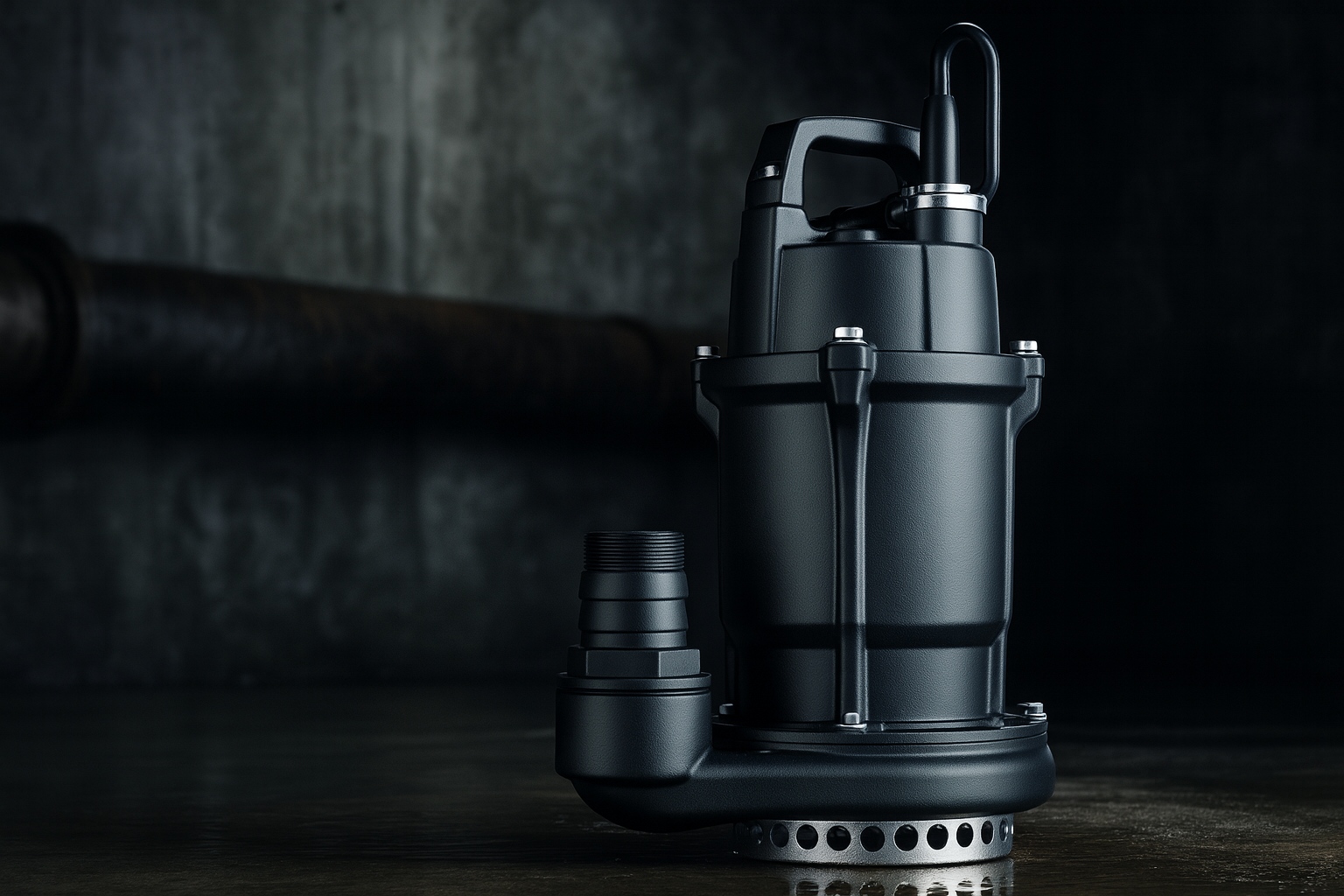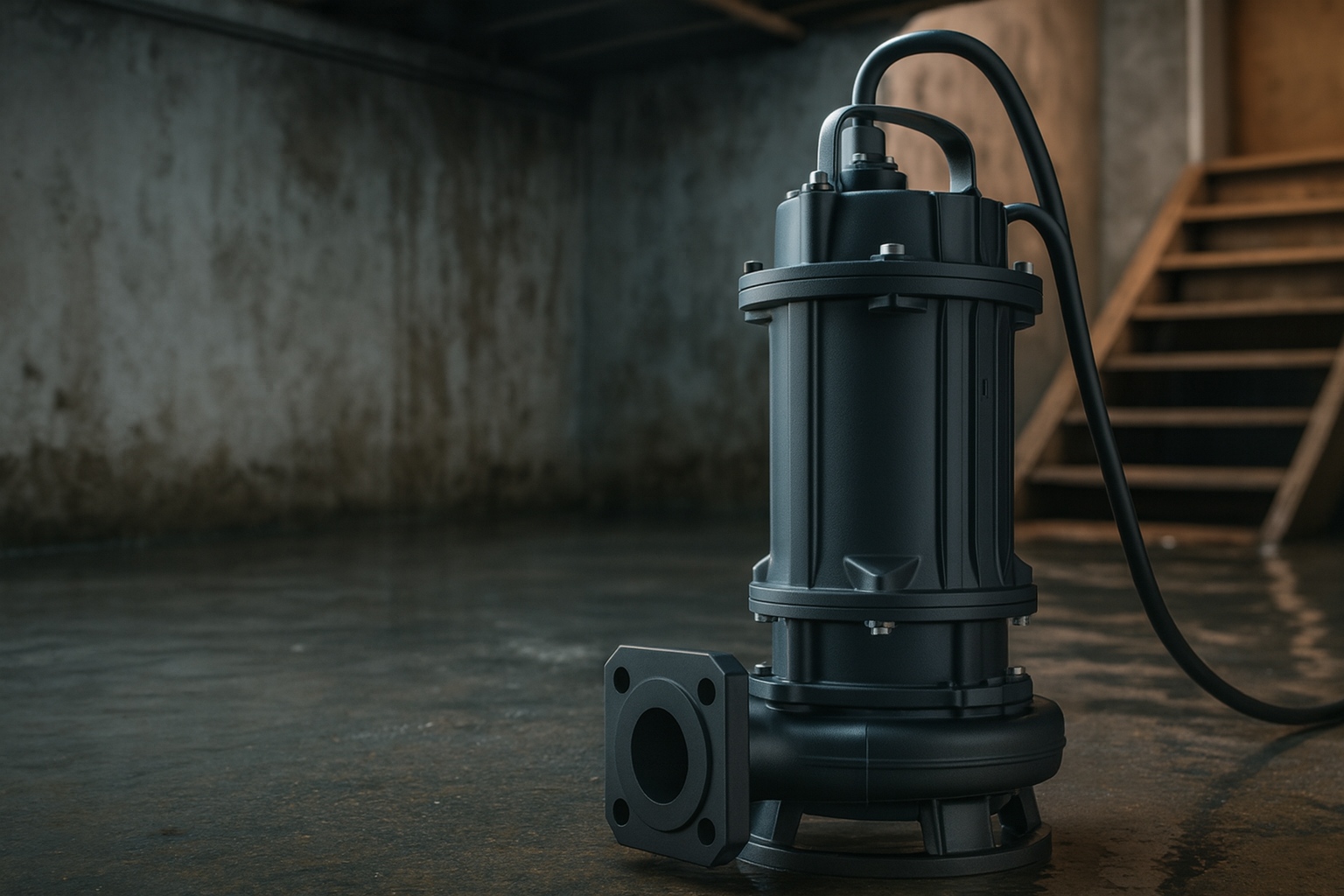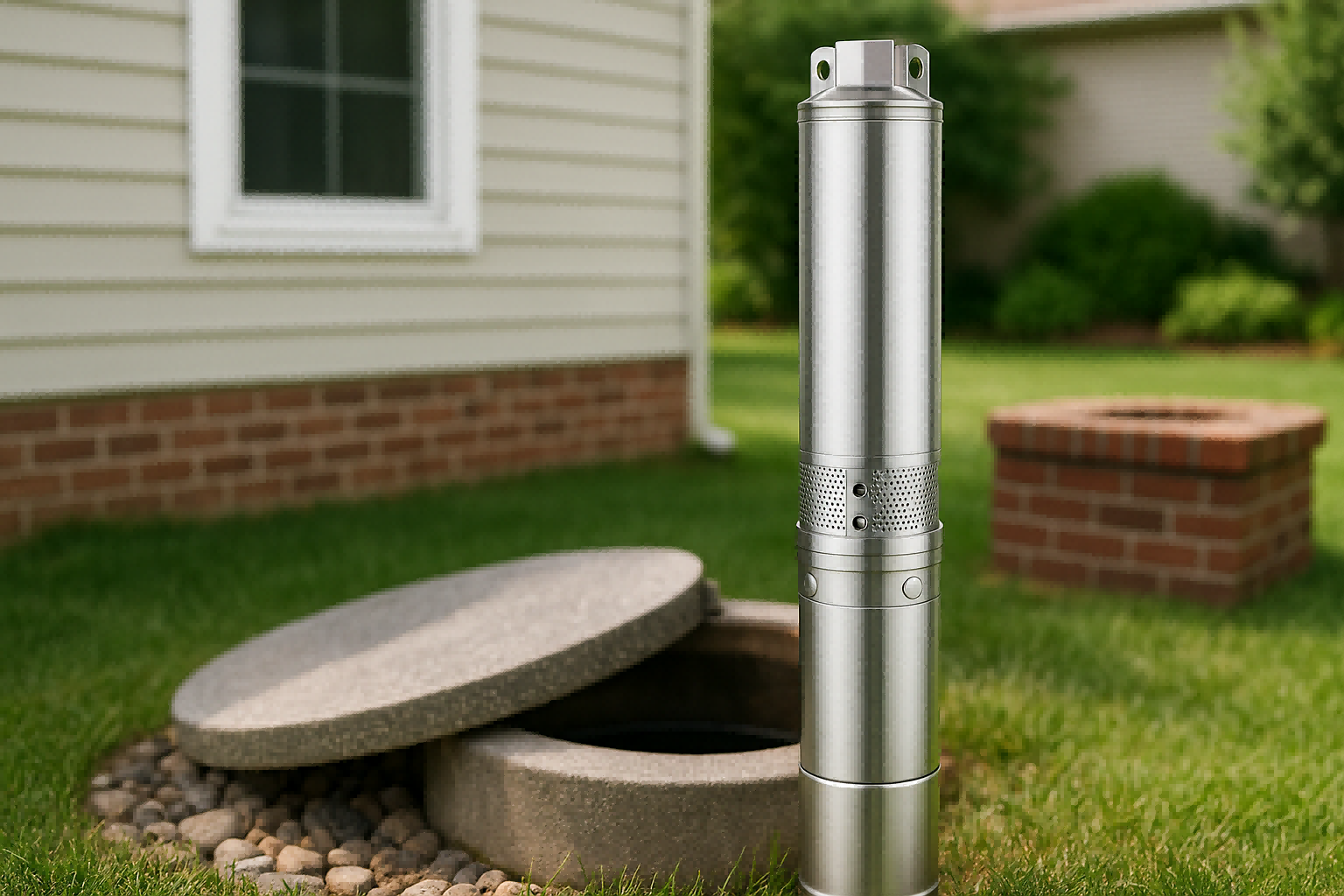Struggling with weak showers and trickling faucets?
Low water pressure is a common frustration, but understanding the right pump can solve it for good.
Technically, a booster pump is a specific type of pressure pump. While "pressure pump" is a broad term for any pump that creates pressure, a "booster pump" specifically increases the pressure of water that is already flowing within a pipeline, like from your city's main supply.
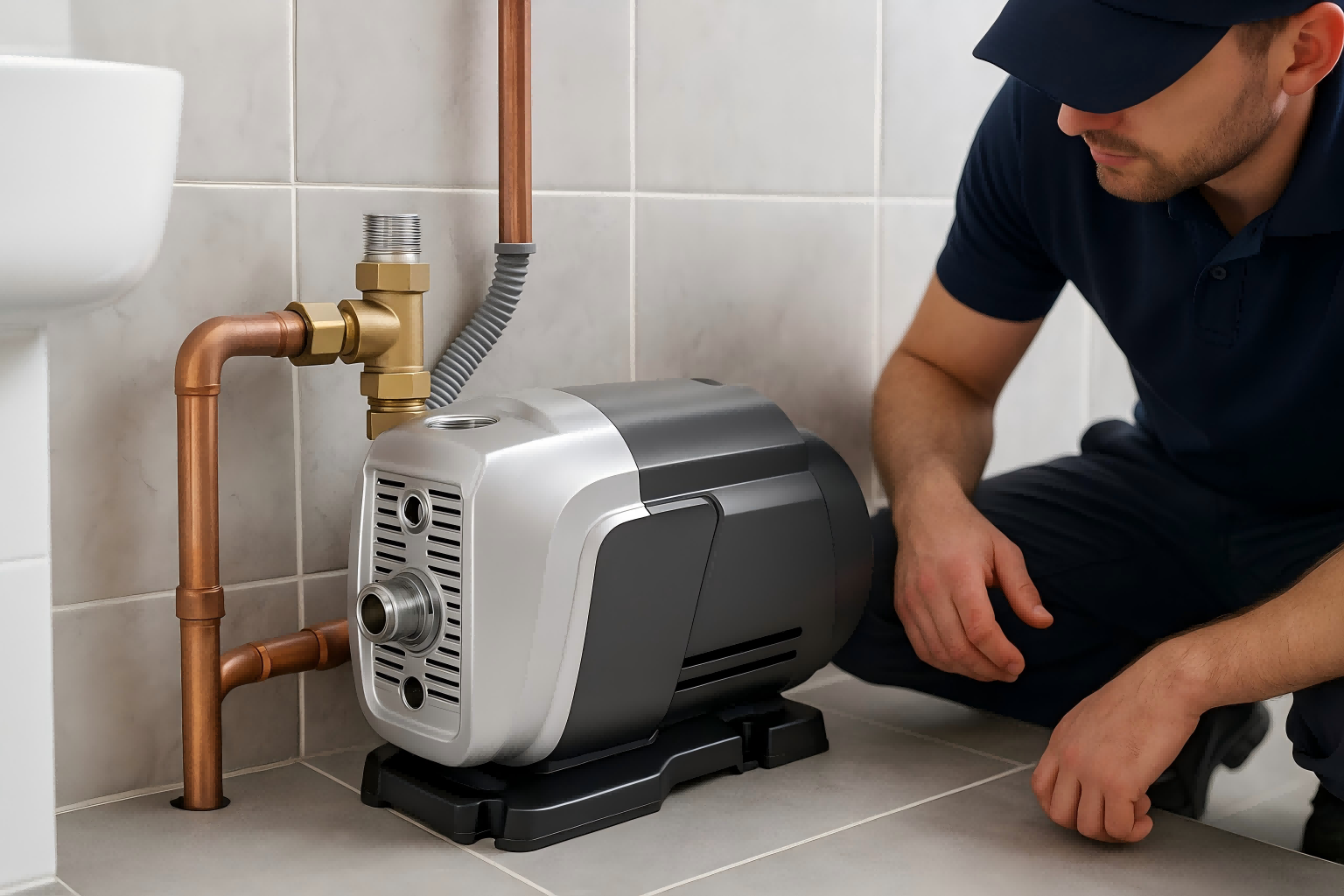
While the names are often used interchangeably, the real difference in performance comes from the advanced technology inside a modern booster pump.
Understanding these internal features is the key to choosing a pump that not only boosts pressure but does so efficiently, quietly, and reliably for years to come.
Let's dive deeper into what makes these pumps tick and how they solve your water pressure woes.
What Core Technology Drives a Modern Booster Pump?
Tired of that constant, annoying pump hum and a rising electricity bill?
The noise and inefficiency of older pumps can disrupt your home and drain your wallet.
A modern booster pump’s core is its advanced motor and control system. It combines a high-efficiency Permanent Magnet Synchronous Motor (PMSM) with a Variable Frequency Drive (VFD). This pairing provides perfectly consistent pressure, operates almost silently, and slashes energy consumption by matching its speed to your exact water usage.
The secret lies in the synergy between these two key components.
Unlike a traditional pump that runs at full speed every time a tap is opened, a VFD-controlled pump acts more like the cruise control in your car.
It intelligently adjusts its speed to maintain a constant pressure, no matter how many faucets are running.
This smart control not only provides a better user experience but also leads to significant benefits in performance and longevity.
Silent Operation
The precise control of the motor speed by the VFD eliminates the jarring start-stop cycles of old pumps.
This results in an incredibly quiet performance.
Many advanced models operate at a noise level of 50 decibels or less, which is quieter than a normal conversation [^6].
You can install it in your home without worrying about disruptive noise.
Customizable Pressure
Every home and application has different pressure needs.
A modern VFD pump gives you complete control.
You can typically adjust the target pressure across a very wide range, often from 20% to as high as 95% of the pump's maximum capability [^6].
This flexibility ensures you get the perfect water pressure for your specific plumbing system and personal preference.
Soft Start & Soft Stop
When a conventional pump kicks on, the sudden jolt of power sends a shockwave—known as water hammer—through your pipes.
This can lead to noise, vibrations, and long-term damage.
A VFD pump uses a "soft start" and "soft stop" function [^6].
It gradually ramps the motor's speed up and down.
Benefits of Soft Start/Stop
| Feature | Impact on System |
|---|---|
| Reduced Mechanical Stress | Prevents sudden torque on the motor and pump components, extending their lifespan. |
| Eliminates Water Hammer | Protects pipes, joints, and faucets from damaging hydraulic shock. |
| Lower Inrush Current | Reduces electrical stress on your home's wiring during pump startup. |
| Quieter Operation | The gradual start and stop is much quieter than the sudden clunk of an old pump. |
This gentle operation is crucial for the long-term health and durability of both the pump and your entire plumbing system.
How Are High-Quality Booster Pumps Built to Last?
Worried that a new pump will fail just a few years after you install it?
The hassle and expense of replacing a pump prematurely is a major concern for any homeowner or business.
High-quality booster pumps are engineered for longevity through superior material selection. They use premium internal parts, like high-grade silicon steel in the motor, heat-resistant magnets, precision-engineered bearings from top manufacturers, and corrosion-proof stainless steel for all water-contacting parts.
A pump is only as strong as its weakest link.
That's why leading manufacturers pay meticulous attention to every single component inside the pump.
From the motor's core to the impeller that moves the water, choosing the right materials is what separates a pump that lasts for a decade from one that fails in a few years.
This commitment to quality engineering ensures reliable performance day in and day out.
Advanced Motor Stator Design
The stator is the stationary part of the motor and is critical for efficiency and heat management.
A superior stator design includes several key features:
- High-Grade Silicon Steel: Uses materials like 600-grade silicon steel to minimize energy loss and improve overall motor efficiency [^6].
- Excellent Thermal Management: Engineered for a low temperature rise (often 50 Kelvin or less), which means it runs cooler and lasts much longer [^6].
- High-Temperature Insulation: Employs Class F insulation wire, which can withstand high temperatures without degrading, ensuring reliability under heavy loads [^6].
- Enhanced Safety: Often features dual insulation for extra protection against electrical faults [^6].
High-Performance Rotor Magnet
The rotor is the spinning heart of the motor.
In a high-efficiency pump, it uses an advanced ferrite magnet that can handle extreme temperatures—sometimes up to 150°C—without losing its magnetic properties [^6].
Some models also offer an optional configuration that includes EMC (Electromagnetic Compatibility) and PFC (Power Factor Correction).
This ensures the pump doesn't interfere with other electronics and uses electricity more efficiently, which is often a requirement to meet strict international standards [^6].
The Importance of Bearings
Bearings are a small but critical detail.
While often overlooked, they are essential for smooth, quiet, and long-lasting operation.
Using premium, high-precision bearings from reputable sources results in a pump that is significantly more durable.
Compared to standard alternatives, these high-quality bearings can offer up to 16% higher precision, 40% quieter operation, and an 11% longer lifespan [^6].
The Hydraulic Core
The parts that actually touch the water must be incredibly durable and resistant to corrosion.
The hydraulic core of a premium pump, especially the impeller, is typically made from high-grade materials like AISI 304 stainless steel [^6].
This material is renowned for its excellent resistance to rust and chemical degradation, ensuring that the water remains clean and the pump performs flawlessly for years.
What Protects the Electronics in a Booster Pump?
Afraid that a little moisture or condensation could fry your pump's expensive electronics?
The controller board is the pump's brain, but it's often vulnerable to the very element it's designed to manage: water.
The most durable booster pumps safeguard their electronics using UltraShield PCB Potting. This process completely seals the main controller board in a solid, waterproof compound, creating an impenetrable barrier against moisture, dust, and vibration. It's the ultimate defense for electronic reliability.
In the damp and often harsh environment where pumps operate, protecting the sensitive electronic components is mission-critical.
A standard circuit board is exposed to air, which means humidity, condensation, and dust can easily cause corrosion and short circuits, leading to premature failure.
Potting the electronics is an advanced manufacturing technique that provides a robust and permanent solution to this common problem.
It's a key feature to look for if you want a pump that is truly built to withstand the test of time.
Total Environmental Shielding
PCB potting creates a 100% waterproof and airtight seal around the entire controller board [^6].
This gives the electronics an impressive IP67 protection rating, meaning they are completely dust-tight and can even withstand being submerged in water [^6].
This physical barrier is a game-changer for reliability.
Manufacturers claim this single feature can prevent up to 95% of all failures that are typically caused by moisture damage [^6].
It effectively isolates the pump's delicate brain from its harsh working environment.
Extending Controller Lifespan
By preventing the root cause of most electronic failures, potting directly contributes to a much longer service life.
The complete protection from environmental factors like humidity, temperature fluctuations, and vibration significantly reduces wear and tear on the electronic components.
Because of this, a potted controller is projected to last 3 to 5 years longer than a conventional, unsealed controller board [^6].
This means fewer service calls, lower maintenance costs, and greater peace of mind.
Potted vs. Non-Potted Electronics
| Feature | Potted Controller | Standard Controller |
|---|---|---|
| Moisture Protection | 100% Waterproof (IP67) | Vulnerable to humidity/splashes |
| Dust/Debris | Completely sealed | Can accumulate on components |
| Vibration Resistance | Excellent | Components can loosen over time |
| Projected Lifespan | Extended by 3-5 years | Standard lifespan |
| Failure Rate | Prevents 95% of moisture issues | Higher risk of environmental failure |
How Does a Smart Booster Pump Protect Itself?
Are you concerned about unexpected issues like a water shortage or a power surge damaging your pump?
Many things can go wrong in a water system, and a simple pump might not be able to handle them.
An intelligent booster pump is equipped with a comprehensive suite of self-protection functions. It continuously monitors its own operation and the water system, ready to automatically adjust or shut down to prevent damage from a wide range of potential faults like overheating, dry running, or electrical issues.
A truly modern booster pump is more than just a motor; it's a smart device designed for self-preservation.
Instead of running until it breaks, it uses an array of sensors and intelligent software to anticipate problems before they cause catastrophic failure.
This built-in intelligence represents a major leap in pump reliability, safeguarding your investment and ensuring your water supply remains uninterrupted.
These protective features actively look after the pump, so you don't have to.
Electrical and Thermal Safeguards
A smart pump's first line of defense is protecting itself from electrical and thermal stress.
It constantly monitors incoming power and its own temperature.
Common protections include:
- Input Voltage Protection: Shuts down if voltage is too high or too low.
- Overcurrent Protection: Prevents damage from electrical surges.
- Phase Loss Protection: Protects the motor in three-phase systems.
- Stall Protection: Stops the motor if the impeller is blocked to prevent burnout.
- Overheating Protection: Monitors the driver board, motor, and water temperature to prevent damage [^6].
System and Operational Protections
Beyond its own health, the pump also monitors the entire water system for problems.
This is where its intelligence truly shines, especially with complex issues like a water shortage.
Dry Run Protection
Running a pump without water can destroy it in minutes.
A smart pump uses a sophisticated multi-stage recovery algorithm to handle this.
- First Detection: If it detects a water shortage, it will attempt to self-prime for a set period (e.g., 360 seconds) before going into a short sleep mode (e.g., 5 minutes) [^6].
- Subsequent Attempts: If water has not returned, it will try again after longer sleep periods (e.g., 2 hours), conserving energy [^6].
- Long-Term Attempts: After several failed attempts, it will switch to even longer sleep periods (e.g., 6 hours), periodically checking for water without wasting power [^6].
Other Key System Protections
- Antifreeze Protection: In cold climates, the pump will automatically run for brief periods to prevent water inside from freezing and causing damage.
- Pipeline Leak Warning: It can detect small, continuous drops in pressure that indicate a leak in your plumbing and alert you to the problem [^6].
- Sensor Failure Warnings: The system self-diagnoses its own sensors and will provide a specific warning if a temperature or pressure sensor fails, making troubleshooting much easier [^6].
Are Modern Booster Pumps Easy to Use?
Intimidated by the thought of programming a high-tech piece of equipment?
Complex controls can be frustrating, especially when you just want reliable water pressure without reading a thick manual.
Absolutely. Despite their internal complexity, the best VFD booster pumps are designed with a simple, intuitive user interface. They typically feature just a few buttons for essential controls like on/off and pressure adjustment, paired with clear LED indicators that show the system's status at a glance.
The goal of advanced technology should be to make life simpler, not more complicated.
Manufacturers of modern booster pumps understand this well.
They have invested heavily in designing control panels that are easy for anyone to understand and operate.
You don't need to be an engineer to get the perfect water pressure for your home.
All the sophisticated technology works quietly in the background, while you interact with a system that is straightforward and user-friendly.
Simple, Direct Controls
The day-to-day operation of a modern pump is incredibly simple.
The interface is designed to be clear and responsive.
- On/Off: A quick press of the power button turns the unit on or off [^6].
- Pressure Adjustment: Simple "UP" and "DOWN" arrow buttons allow you to increase or decrease the target water pressure in small increments until it's just right [^6].
- Factory Reset: If you ever need to restore the original settings, a long press of the power button for a few seconds will typically do the trick [^6].
Real-Time Performance Monitoring
For those who want more insight into how their pump is performing, a smart interface provides a wealth of live data.
A long press of a specific button often cycles the display through several key operating parameters.
This gives you a real-time window into the pump's health and efficiency. You can typically monitor:
- A.xx: Current water temperature.
- P.xxx: Real-time power consumption in watts.
- xxxx: Current motor speed in RPM.
- U.xxx: Live input voltage.
- t.xx: Temperature of the main PCB controller.
- Recovery Pressure: The pressure level being targeted [^6].
At-a-Glance Status Indicators
You don't have to cycle through menus to know what the pump is doing.
A set of distinct LED lights provides immediate visual feedback on the pump's status.
These indicators can instantly tell you if the pump is:
- Running in normal constant pressure mode.
- Detecting a potential pipeline leak.
- Experiencing an issue with the input voltage.
- In a water shortage (dry run) status.
- Operating at a certain power level (e.g., low, medium, or high) [^6].
This makes it easy to quickly diagnose any potential issues without needing any special tools.
Conclusion
A booster pump is a pressure pump, but a modern VFD booster is in a class of its own.
Its smart technology delivers quiet, reliable, and efficient performance that solves water pressure problems effectively.
Frequently Asked Questions (FAQs)
Can a booster pump increase water flow?
Yes, by increasing pressure, a booster pump also improves the flow rate at your faucets. It helps push more water through the pipes per minute.
Do I need a pressure tank with a VFD booster pump?
Generally, no. A VFD pump maintains constant pressure by adjusting its speed, making a large external pressure tank unnecessary for most home installations.
How much energy does a variable speed booster pump save?
A VFD pump can reduce electricity consumption by up to 50% or more compared to a traditional fixed-speed pump by only using the energy needed to meet demand.
What is the ideal water pressure for a house?
Most homes operate best with water pressure between 40 and 60 PSI. A booster pump can be set to maintain a constant pressure within this ideal range.
Can a booster pump be too powerful for my plumbing?
Yes, excessively high pressure can damage pipes and fixtures. It's important to choose the right size pump and set it to a safe pressure level for your home.
What happens if my booster pump runs without water?
Modern smart pumps have dry-run protection that automatically shuts the pump off to prevent damage, then periodically re-checks if the water supply has returned.
How long do booster pumps last?
A high-quality, well-maintained booster pump can last for 10 to 15 years. Features like soft start and electronic protections significantly extend its lifespan.
Where should a booster pump be installed?
It should be installed on the main water line after the water meter and any shut-off valves, typically in a basement, garage, or utility closet.


